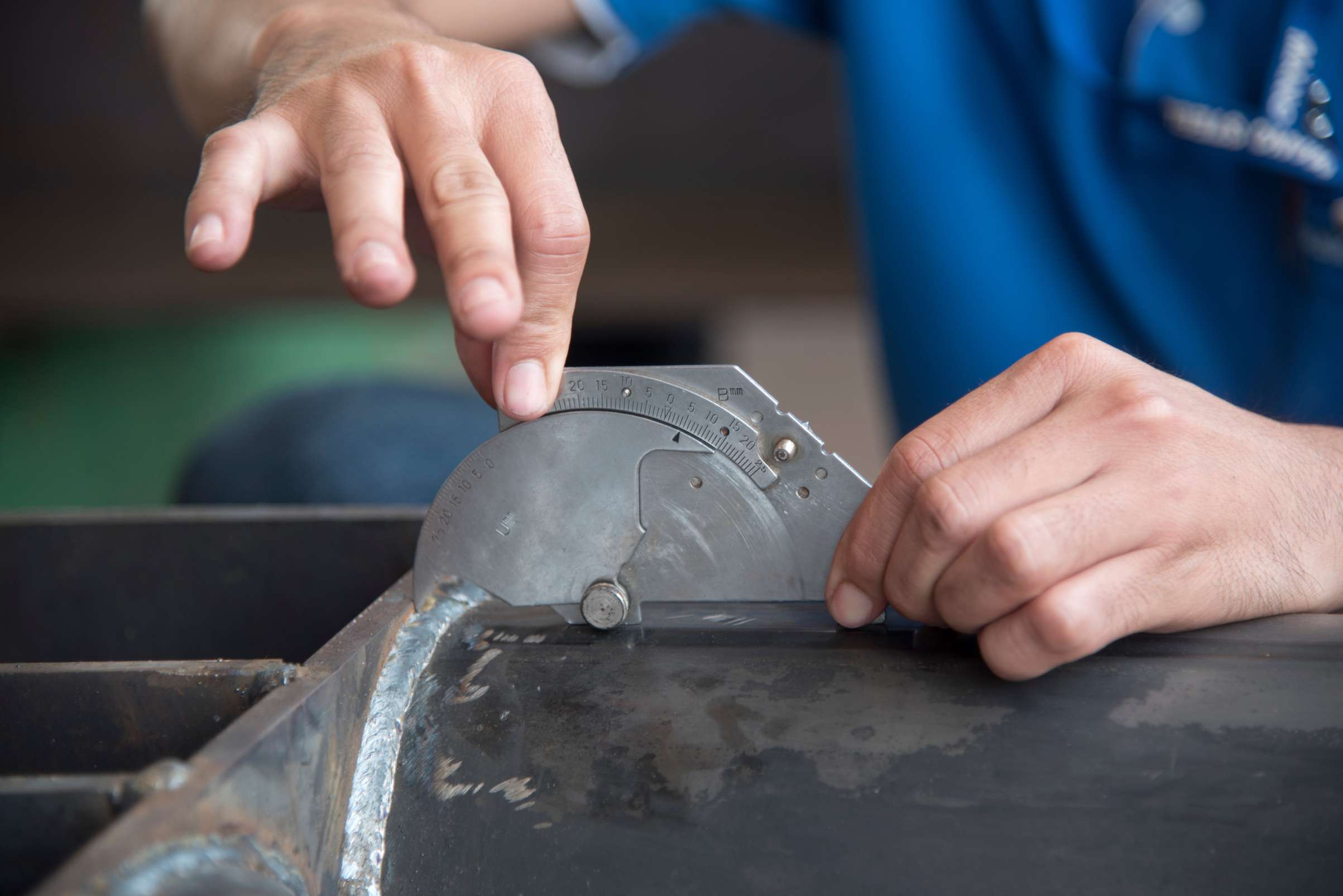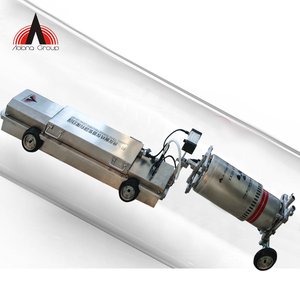Understanding the Fundamentals of Pipe Welding Assessment: Essential Aspects for Assessing Weld High Quality and Averting Failures
In the world of pipe welding evaluation, the risks are unquestionably high, requiring a detailed understanding of essential concepts to make sure weld high quality and alleviate failing threats. Different crucial aspects enter into play, including the option of suitable products, the application of sophisticated assessment strategies, and the recognition of prevalent welding issues. Furthermore, adherence to governing criteria plays a critical role in keeping system integrity. Yet, the intricacies fundamental in these procedures raise crucial concerns regarding ideal techniques and emerging modern technologies that could redefine examination procedures-- inquiries that necessitate further exploration.
Relevance of Weld Quality
The stability of a pipe is fundamentally dependent on the quality of its welds, making weld high quality a critical consider making certain safe and effective operation. A pipe weld acts as a junction point where products are signed up with, and any deficiencies around can bring about significant architectural weak points. Poor weld top quality can cause leaks, tears, and tragic failings, posturing serious security hazards and environmental dangers.
Several elements contribute to the quality of a weld, consisting of the selection of welding process, the skills of the welder, and the problems under which the welding is done - Pipeline Welding Inspection. Poor prep work, inappropriate warm input, and contamination can jeopardize weld integrity, leading to concerns such as porosity, insufficient combination, or fractures. Therefore, strict high quality control steps need to be carried out throughout the welding process to reduce these dangers
Furthermore, the lasting performance of a pipe is greatly affected by the longevity of its welds. Top quality welds not just improve the total toughness of the pipeline however likewise extend its life span, minimizing the requirement for costly fixings and downtime. For this reason, ensuring superior weld top quality is extremely important in pipe design and upkeep methods.
Key Evaluation Techniques
Guaranteeing weld top quality necessitates the application of efficient evaluation techniques to identify prospective flaws prior to they lead to failures. Pipeline Welding Inspection. Amongst the most extensively used methods are visual assessment, radiographic screening (RT), ultrasonic testing (UT), and magnetic particle screening (MT) Each method offers a distinctive function and is picked based on the specific requirements of the pipeline task
Visual assessment is the very first line of defense, permitting assessors to examine surface problems, positioning, and general craftsmanship. It is a quick and cost-efficient technique that can reveal obvious flaws. Radiographic testing gives a thorough view of internal weld integrity by utilizing X-rays or gamma rays to identify subsurface defects. This method is particularly efficient for identifying splits, incorporations, and voids.
Ultrasonic testing utilizes high-frequency audio waves to evaluate the density and integrity of welds, making it excellent for discovering interior interruptions. Magnetic fragment testing is a trustworthy method for identifying surface area and near-surface flaws on ferromagnetic products by applying magnetic fields and great ferrous particles. By using these key assessment methods, pipeline welding assessors can ensure the highest quality standards are kept, ultimately leading to more secure and a lot more trustworthy pipeline systems.
Common Welding Issues
Among the most common problems are porosity, which occurs when gas entraps in the weld steel, producing voids that deteriorate the joint. An additional significant problem is absence of fusion, where the weld metal does not sufficiently bond with the base product, jeopardizing the joint's strength.

Cracks are likewise a crucial issue, materializing in various types such as warm splits, cold splits, and root cracks. Each type presents unique obstacles and requires specific assessment techniques for detection. Undercut is an additional defect that can lower the weld's cross-sectional location, leading to stress focus points, while slag incorporation takes place when non-metallic material comes to be entraped in the weld pool, detrimentally influencing the mechanical buildings of the weld.
Additionally, wrong bead form can cause unequal tension distribution. Identifying these usual problems is vital for examiners and welders alike, as very early discovery and modification are essential to ensuring the durability and content reliability of pipe systems.

Materials and Their Effect
Picking the proper materials for pipe welding dramatically affects the general performance and reliability of the bonded joints. The choice of base steels, filler materials, and coverings plays a vital function in determining the strength, corrosion resistance, and sturdiness of the welds. For circumstances, carbon steel is frequently utilized for its balance of toughness and cost, yet it might be prone to deterioration in specific settings, demanding using protective layers or corrosion-resistant alloys.
In addition, different steel welding needs cautious consideration of thermal development residential or commercial properties and possible galvanic rust. The compatibility of products can substantially affect the microstructure of the weld, causing variations in mechanical properties. As an example, stainless-steel offers excellent corrosion resistance yet might require details filler materials to ensure an audio weld joint.
Additionally, the impact of temperature and environmental problems on product selection can not be undervalued. High-strength steels might shed ductility at elevated temperature levels, while low-temperature applications could require materials with enhanced sturdiness. Inevitably, comprehending the effects of material options is important for accomplishing optimal weld quality and protecting against failures in pipe systems.

Regulative Requirements and Compliance
Governing requirements and compliance play an essential role in pipe welding, developing the framework within which efficient and risk-free practices are maintained. These criteria are established by different organizations, consisting of the American Society of Mechanical Engineers (ASME), the American Welding Culture (AWS), and the Pipe and Hazardous Products Safety Administration (PHMSA) Following these regulations makes certain that welding procedures satisfy the called for quality and safety standards.
Conformity with regulative requirements is crucial not just for ensuring the home honesty of the welds yet likewise for securing the atmosphere and public safety and security. Inspectors are tasked with verifying that welding operations conform with these criteria via strenuous evaluations of both the processes and the final welds. This includes evaluating welder certifications, welding treatments, and the products made use of.
Failure to abide by recognized laws can lead to considerable repercussions, including expensive repairs, lawful responsibilities, and catastrophic failings. Therefore, organizations should incorporate conformity into their functional techniques, promoting a culture of security and quality. Routine training and audits are crucial components in preserving adherence to these regulative requirements, making certain that all personnel are knowledgeable and equipped to promote the highest degree of pipeline welding top quality.
Final Thought
Finally, a detailed understanding of pipe welding evaluation is essential for making certain weld high quality and avoiding failings. By utilizing crucial inspection techniques and identifying typical welding defects, assessors can properly analyze the stability of welds. Consideration of product selection and adherence to regulative standards better enhance the dependability and safety of pipe systems. Eventually, these methods add to the prevention of leakages and tragic failures, highlighting the crucial relevance of extensive inspection procedures in pipe construction and maintenance.
In the realm of pipe welding assessment, the stakes are indisputably high, demanding a complete understanding of essential concepts to ensure weld top quality and reduce failing dangers (Pipeline Welding Inspection).The honesty of a pipe is basically reliant on the quality of its welds, making weld top quality a vital element in ensuring safe and efficient operation.A number of factors add why not try here to the high quality of a weld, consisting of the selection of welding process, the abilities of the welder, and the conditions under which the welding is executed. Undercut is another issue that can lower the weld's cross-sectional area, leading to anxiety concentration points, while slag incorporation happens when non-metallic material becomes trapped in the weld swimming pool, detrimentally affecting the mechanical homes of the weld
In final thought, a comprehensive understanding of pipe welding evaluation is essential for ensuring weld top quality and preventing failures.